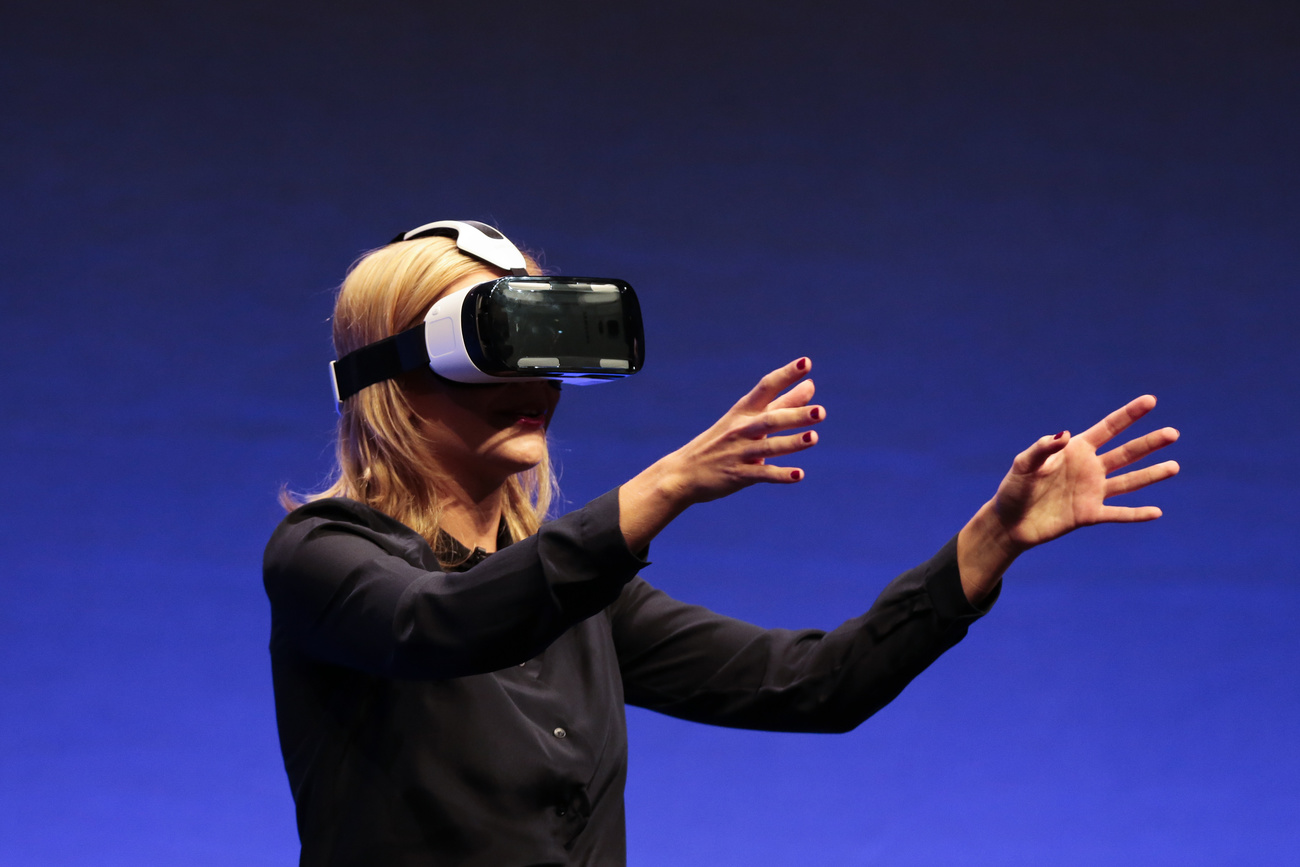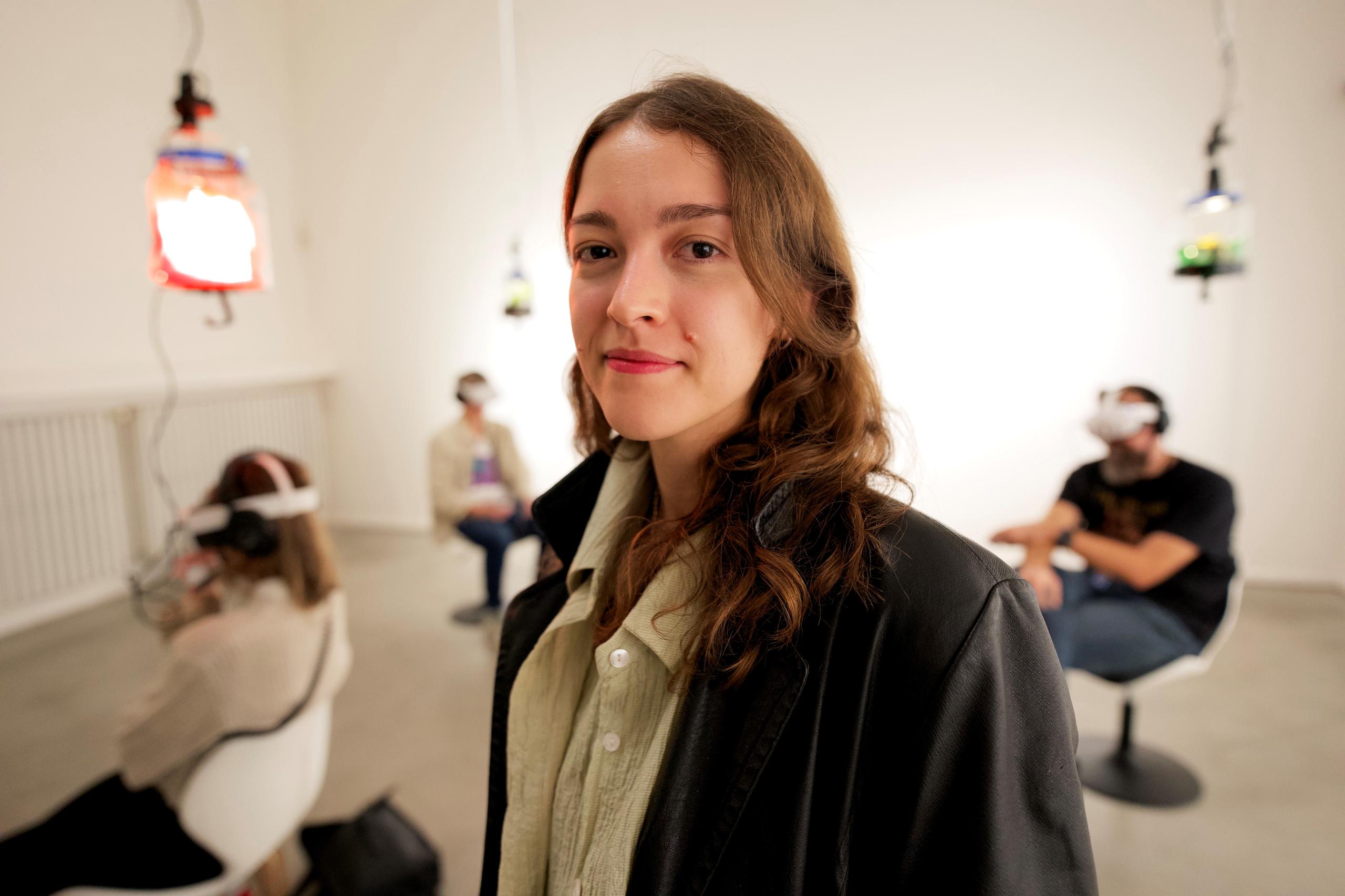Swiss research uses VR to reduce pre-surgery anxiety
Imagine travelling to an island paradise or being lulled by relaxing images before going under the knife. The use of virtual reality in medicine is becoming increasingly popular, including to reduce pre-operation anxiety. Researchers in Switzerland are working to understand its effects.
“When I tried it at home, I fell asleep twice in five minutes,” Andrea Polito tells SWI swissinfo.ch while setting up a virtual reality helmet at the Beata Vergine hospital in southern Switzerland.
Worldwide, almost half of the patientsExternal link who have to undergo surgery experience anxiety before the procedure. Polito, an anaesthesiologist, is studying how virtual reality can reduce the effects of the condition.
Pre-operative anxiety is our body’s defence mechanism against an event that is considered dangerous. Polito explains that “it can cause anything from simple discomfort to the onset of more or less serious complications”. For example, an accelerated heartbeat due to anxiety can lead to increased bleeding during surgery. Patients suffering from pre-operative anxiety are also more likely to develop post-traumatic stress disorder (PTSD).
Can wearing a visor and being transported by relaxing images and sounds really prevent this? Stéphane BouchardExternal link, who holds the Canadian research chair in clinical cyber-psychology and teaches at the University of Quebec, is convinced of it. “These are well-known psychological mechanisms. It works, we know that,” he says. “The questions that need to be asked now are: in what context does it work best? For whom?”
It is these questions that Polito and his team try to answer in the study, carried out on behalf of the University of Lugano.
Distracted patients are less anxious
The use of virtual reality in medicine is nothing new, explains Bouchard, who has been studying the subject for more than two decades. The technology has long been used for motor-skill rehabilitation and for the treatment of people suffering from phobias or PTSD.
Studies by researchers such as the University of Washington’s Hunter HoffmanExternal link have highlighted since the 1990s how virtual reality can be an excellent tool to help patients cope better with pain.
Most of this research has shown that, alongside the pain-relief effect, the use of virtual reality also brings a reduction in anxiety.
Two approaches have developed, says Bouchard. The first involves keeping the patient cognitively occupied in a playful way. The most famous example of this is SnowWorldExternal link, a video game that Hoffman developed for the treatment of patients with severe burns.
The second approach, advocated in particular by the producers of the French VR therapeutic application “Bliss”,External link is instead cognitively passive. The intention is to immerse the person in a relaxing and contemplative environment with which they do not interact, except to look around.
In both cases, the aim is to distract the patient. That distraction diverts attention from pain and anxiety and makes a difficult experience more bearable.
More VR, fewer drugs
Among the patients waiting for an operation in the Mendrisio hospital, Polito identified those susceptible to pre-operative anxiety and asked them if they would like to participate in the research.
Over the course of five months, about 100 patients tested the visor, including Alessandra Negroni, whom we met while she was waiting for surgery. “I usually can hardly relax, but this worked,” she said after having experienced a virtual paradise island. “It transports you.”
But not all patients experience the same benefits, says nurse Carmen Davide. “Perhaps because of anxiety due to other conditions, some patients have changed their mind and decided not to try it,” she says, recalling the case of a patient who, after wearing the visor, complained of nausea and dizziness and had to discontinue the experience.

More
Nausea-free VR: how far has research progressed?
These negative experiences, which are the exception among the patients who participated in the study, are what motivate Polito and his team to find out more. Such experiences help identify the type of patient on whom the technology can work and inspire researchers to devise new virtual-reality-based methods that can work even in difficult circumstances.
Studies in the field of medical VR benefit from the fact that they are very targeted. “Medications do not switch on and off instantly”, points out a recent National Geographic storyExternal link on the subject. “Instead, when a patient lifts the visor, the effect stops.”
The “classic” method of reducing pre-operative anxiety involves administering drugs that, according to the researcher, do not actually reduce anxiety – they simply put the patient into a sedated state.
Cheap, accessible technology
Things have changed since the early days of virtual reality, when a visor could cost as much as CHF20,000 ($22,800) and had to be connected to a massive computer, Bouchard explains. Today, it is no longer necessary to connect the visor to a computer and the device costs just a few hundred Swiss francs. The visors are also increasingly simple to set up, which makes it easier for staff to use.
“The technology works,” Bouchard repeats, explaining that “the current challenges are mainly about access”. To get the necessary funds and permits, he explains, researchers must prove to the authorities that the technology is safe and effective, in every country where it is to be used.
In short, Polito hopes his research is “a step towards a new normal” for treating anxious surgical patients.
Translated from Italian by DeepL/Veronica deVore










You can find an overview of ongoing debates with our journalists here . Please join us!
If you want to start a conversation about a topic raised in this article or want to report factual errors, email us at english@swissinfo.ch.